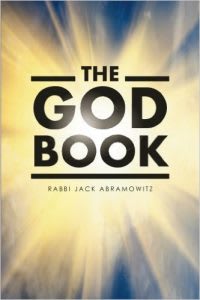3.4 - God's Attributes
Sources refer to Rabbi Bachya ibn Pakuda's Chovos HaLevavos (Duties of the Heart)
************************************
Attributes of God’s Essence (Chapter 10, part I)
The attributes we use to describe God can be divided into those of His essence and those of His deeds.
The attributes of God’s essence existed even before He created the universe and they are three: He exists, He is One and He is eternal. These attributes provide insight into God’s nature and help human beings to better understand Him.
We attribute existence to Him because observing His handiwork tells us that He exists. Regarding this, Isaiah 40:26 says, “Raise your eyes on high and see: who created these? The One Who brings out their host by number….”
We attribute eternity to God because all our logical arguments led to the conclusion that there was a first cause that preceded all others. If so, the Creator must be the ultimate beginning, before which there was nothing else. Regarding this, Psalms 90:2 says, “From eternity to eternity, You are God.” Similarly, God tells us, “Before Me, no power was created, and none will be after” (Isaiah 43:10).
We have already explained why we describe Him as One: plurality does not apply to God, He does not change, cannot be created or destroyed, combined or separated, or anything else that detracts from His absolute unity.
When we ascribe attributes to God, what we are really doing is precluding their opposites, so what we really mean is that God is not nonexistent, He is not created, and He is not plural.
Each of these three attributes – existence, eternity and unity – are not independent of one another. Rather, each of them necessarily suggests the other two.
If something is absolutely one, it must exist because, if it did not exist, it could not be one. It must also be eternal because absolute unity means that it cannot be created or destroyed.
If something always exists, it must be eternal, otherwise there would be a time in which it did not exist. It must also be one because it could not have been brought into existence. This means it couldn’t be plural because plural things cannot exist perpetually, the individual members always preceding their collection (chapter 7, item #5 again).
If something is eternal, it is necessarily one because something eternal has no beginning and, as we have discussed, plural things must have been created. It must also exist because, logically, if it didn’t exist, how could it be eternal?
So even though we use these three terms to describe God, doing so is not intended to imply any plurality in His nature. It’s merely a human shortcoming in our ability to describe Him. If we could express all these things using a single term, we would.
Attributes of God’s Deeds (Chapter 10, part II)
The attributes of God’s deeds are the descriptions we ascribe based on the actions He performs. Some of these are similar to terms we use to describe humans but we are nevertheless permitted to do so because it’s important for helping us to understand Him. (Also, we have precedent to do so from the prophets and the Sages.) Some of these descriptors metaphorically attribute a body to God along the lines of “God created man in His image” (Genesis 1:27), “God said in His heart” (Genesis 8:21), and many more such examples. Other descriptors metaphorically attribute movement and other bodily motions to God, like “God saw” (Genesis 6:5), “God came down” (Genesis 11:5) and many others.
These are only metaphors. In order to disabuse readers of the notion that God has a physical form, the Targum renders “God saw” as “it was revealed before God,” and “God went up” as “the glory of God departed,” etc. Nevertheless, God saw fit to use such anthropomorphisms in the Torah because the Torah was written for humans who conceptualize things in human terms. Had the prophets described God using spiritual terms, the majority of the people could not have understood what was being discussed. It would be impossible for people to serve God if they couldn’t even conceive of Him, so it was important to use human terminology. More astute readers will understand the anthropomorphisms as metaphors. More ignorant readers may take them literally but, after getting the generally idea, they can be enlightened as to the proper meaning. (Of course, some people are only capable of understanding these verses literally. That’s not their fault.) In short, the danger inherent in not being understood was greater than the danger in being taken too literally. This is why, as the Sages have taught, “the Torah speaks the language of man” (Baba Metzia 31b).
The Torah makes wide use of anthropomorphisms but it is very sparse when it comes to discussing spiritual matters. Such matters as the afterlife are touched upon only passingly. Had the Torah spoken of esoteric matters at length, the average people would have been lost. This serves to level the playing field when it comes to making the Torah accessible to all. The wise will have their interests piqued by the bullet points provided and be motivated to investigate the mysterious, as King Solomon tells us, “Those who seek God will understand everything” (Proverbs 28:5).
The Torah does caution us not to take the anthropomorphisms too literally, telling us “You saw no image (at Sinai), you only heard a voice” (Deuteronomy 4:12) and “Guard yourselves very carefully, for you saw no image…” (Deuteronomy 4:15). Despite the anthropomorphisms, we must guard ourselves carefully not to conceive of God as having a physical form.

